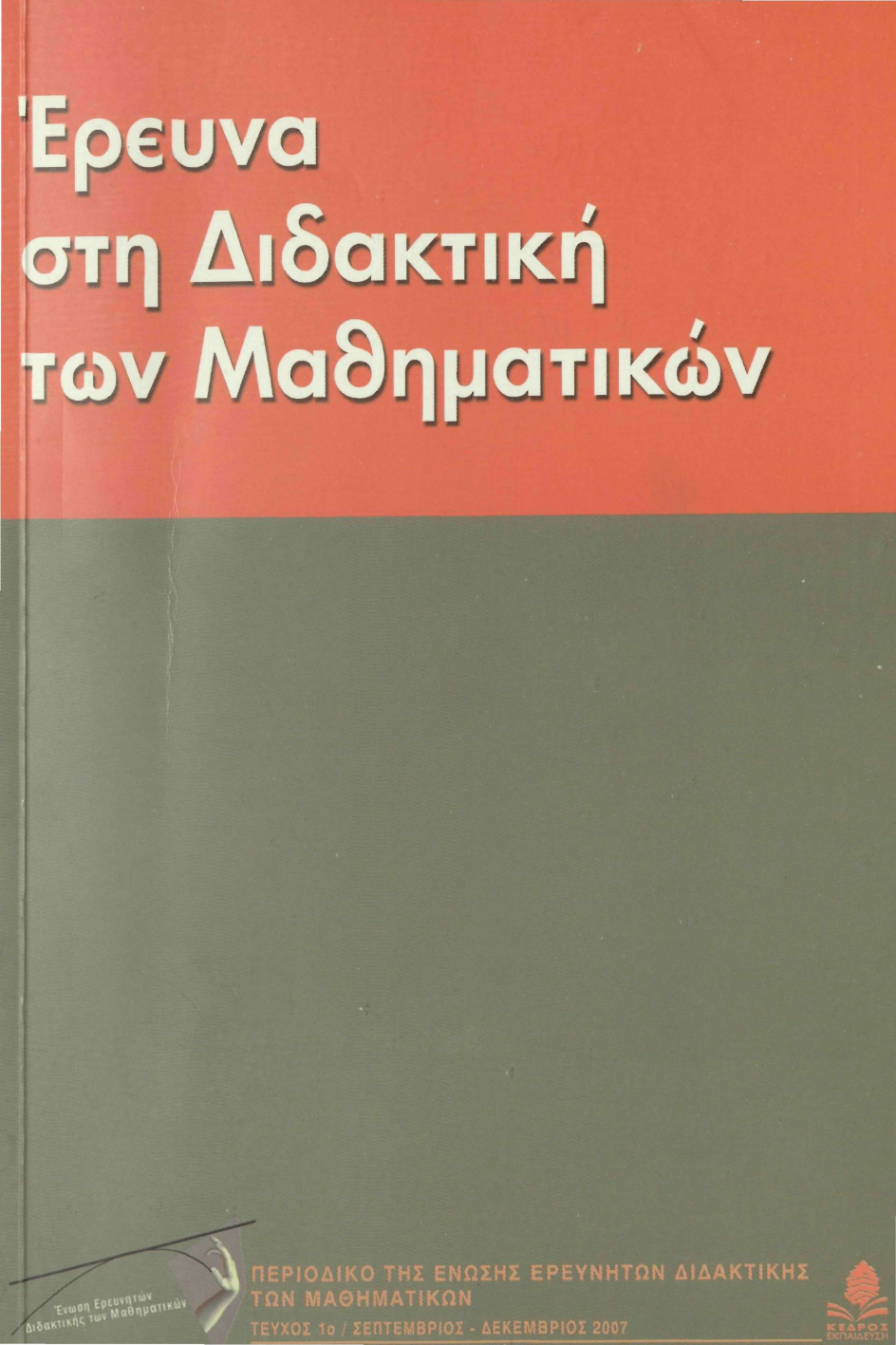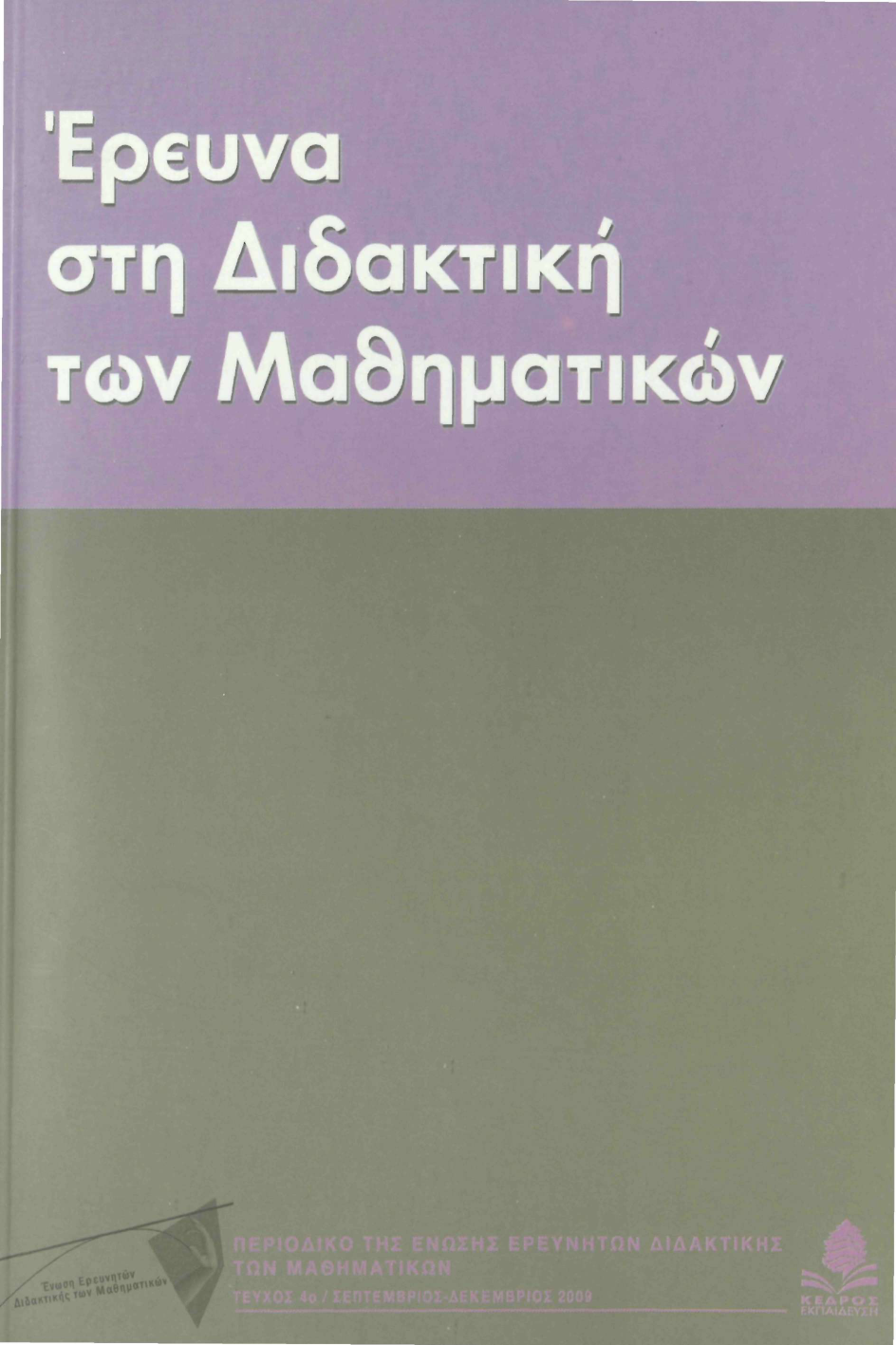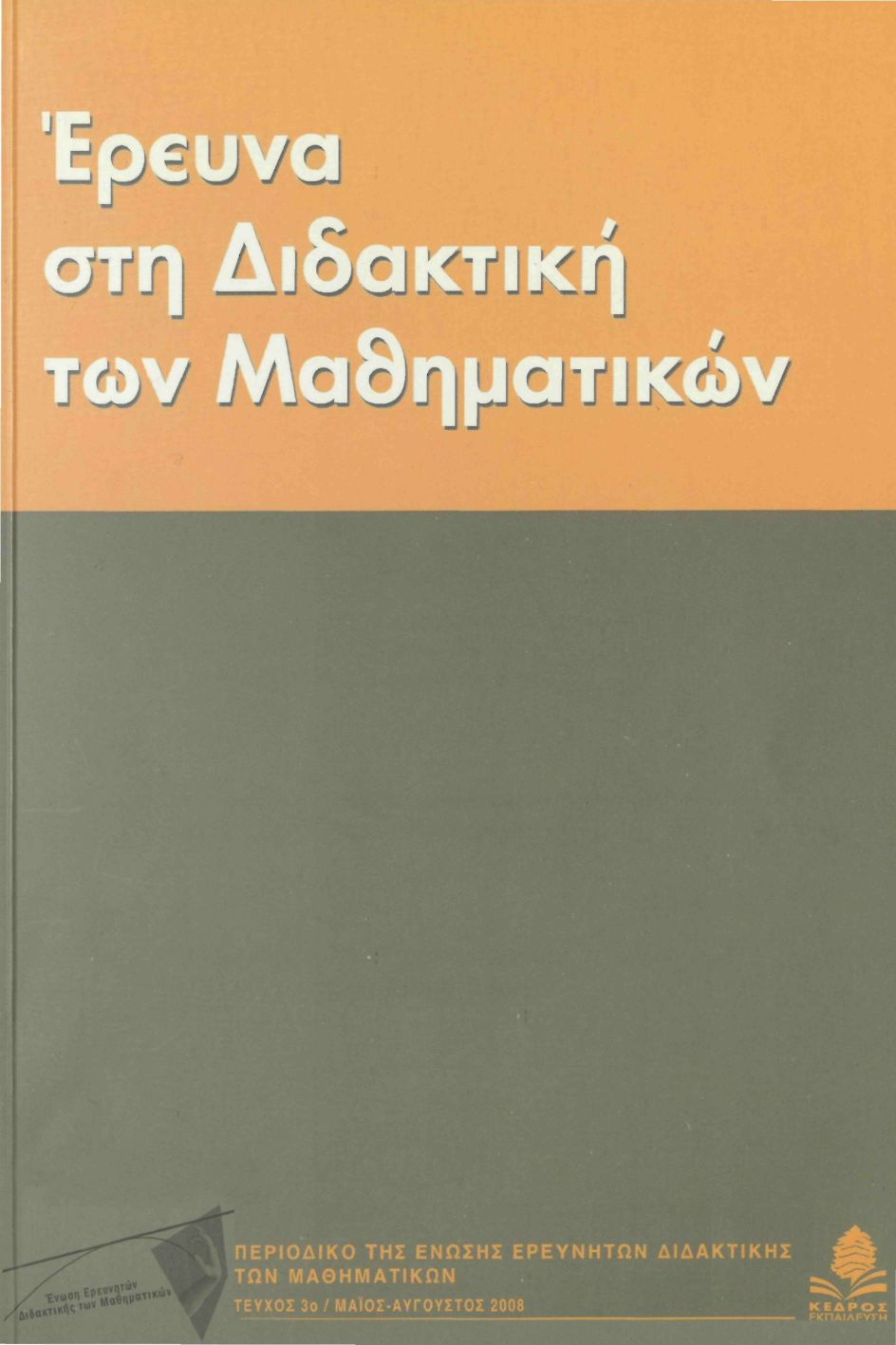ΑΝΗΣΥΧΙΕΣ ΚΑΙ ΠΕΠΟΙΘΗΣΕΙΣ ΕΠΑΡΚΕΙΑΣ ΤΩΝ ΕΚΠΑΙΔΕΥΤΙΚΩΝ ΕΝΑΝΤΙ ΜΙΑΣ ΚΑΙΝΟΤΟΜΙΑΣ: ΕΠΙΧΕΙΡΩΝΤΑΣ ΤΗ ΣΥΖΕΥΞΗ ΤΩΝ ΔΥΟ ΕΝΝΟΙΩΝ

Περίληψη
Πρωταρχικό ρόλο για την επιτυχία οποιασδήποτε καινοτομίας διαδραματί-
ζονν οι ανησυχίες των εκπαιδευτικών. Η έρευνα έχει δείξει ότι οι ανησυχίες
των εκπαιδευτικών αναπτύσσονται σε τρεις διαδοχικές φάσεις: ως προς τον
εαυτό, το συγκεκριμένο έργο και την αναμενόμενη επίδραση τον, αντίστοιχα.
Μια άλλη παράμετρος που βρέθηκε ότι επηρεάζει τη στάση των εκπαιδευτικών
έναντι μιας καινοτομίας είναι οι πεποιθήσεις επάρκειας τους. Στην
παρούσα έρευνα αξιολογείται ένα μοντέλο σύζευξης των ανησυχιών και πεποιθήσεων
επάρκειας των εκπαιδευτικών ως προς μια καινοτομία που εισήχθη
στα βιβλία των Μαθηματικών τον δημοτικού σχολείου. Η ανάλυση δεδομένων
από 157 εκπαιδευτικούς έδειξε ότι οι τελευταίοι παρουσίαζαν έντονες
ανησνχίες (ος προς την ικανότητα τονς να ανταποκριθούν στην καινοτομία
και ένιωθαν πιο επαρκείς να διδάξονν χωρίς να τη χρησιμοποιούν. Από την
ανάλνση προέκυψε, επίσης, ένα πιο σύνθετο πλέγμα αλληλεπιδράσεων μεταξύ
των ανησυχιών και των πεποιθήσεων επάρκειας των εκπαιδευτικών σε
σχέση με αντίστοιχα αποτελέσματα προηγούμενων ερευνών. Τα ευρήματα
αυτά έχουν επιπτώσεις τόσο σε ερευνητικό επίπεδο όσο και αναφορικά με
την πολιτική εφαρμογής καινοτομιών.Λεπτομέρειες άρθρου
- Πώς να δημιουργήσετε Αναφορές
-
Χαραλάμπους (Charalampos Charalampous) X., Κυριακίδης (Leonidas Kyriakidis) Λ., & Φιλίππου (Giorgos Philippou) Γ. (2018). ΑΝΗΣΥΧΙΕΣ ΚΑΙ ΠΕΠΟΙΘΗΣΕΙΣ ΕΠΑΡΚΕΙΑΣ ΤΩΝ ΕΚΠΑΙΔΕΥΤΙΚΩΝ ΕΝΑΝΤΙ ΜΙΑΣ ΚΑΙΝΟΤΟΜΙΑΣ: ΕΠΙΧΕΙΡΩΝΤΑΣ ΤΗ ΣΥΖΕΥΞΗ ΤΩΝ ΔΥΟ ΕΝΝΟΙΩΝ. Έρευνα στη Διδακτική των Μαθηματικών, (1), 8–39. https://doi.org/10.12681/enedim.18762
- Ενότητα
- Άρθρα

Αυτή η εργασία είναι αδειοδοτημένη υπό το CC Αναφορά Δημιουργού 4.0.
Οι συγγραφείς των άρθρων που δημοσιεύονται στο περιοδικό διατηρούν τα δικαιώματα πνευματικής ιδιοκτησίας επί των άρθρων τους, δίνοντας στο περιοδικό το δικαίωμα της πρώτης δημοσίευσης. Άρθρα που δημοσιεύονται στο περιοδικό διατίθενται με άδεια Creative Commons BY και σύμφωνα με την άδεια μπορούν να χρησιμοποιούνται ελεύθερα, με αναφορά στο/στη συγγραφέα και στην πρώτη δημοσίευση.




